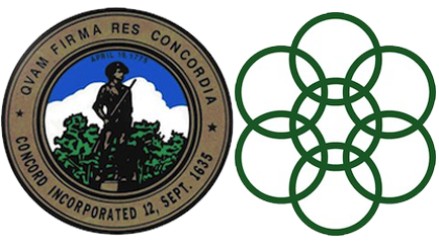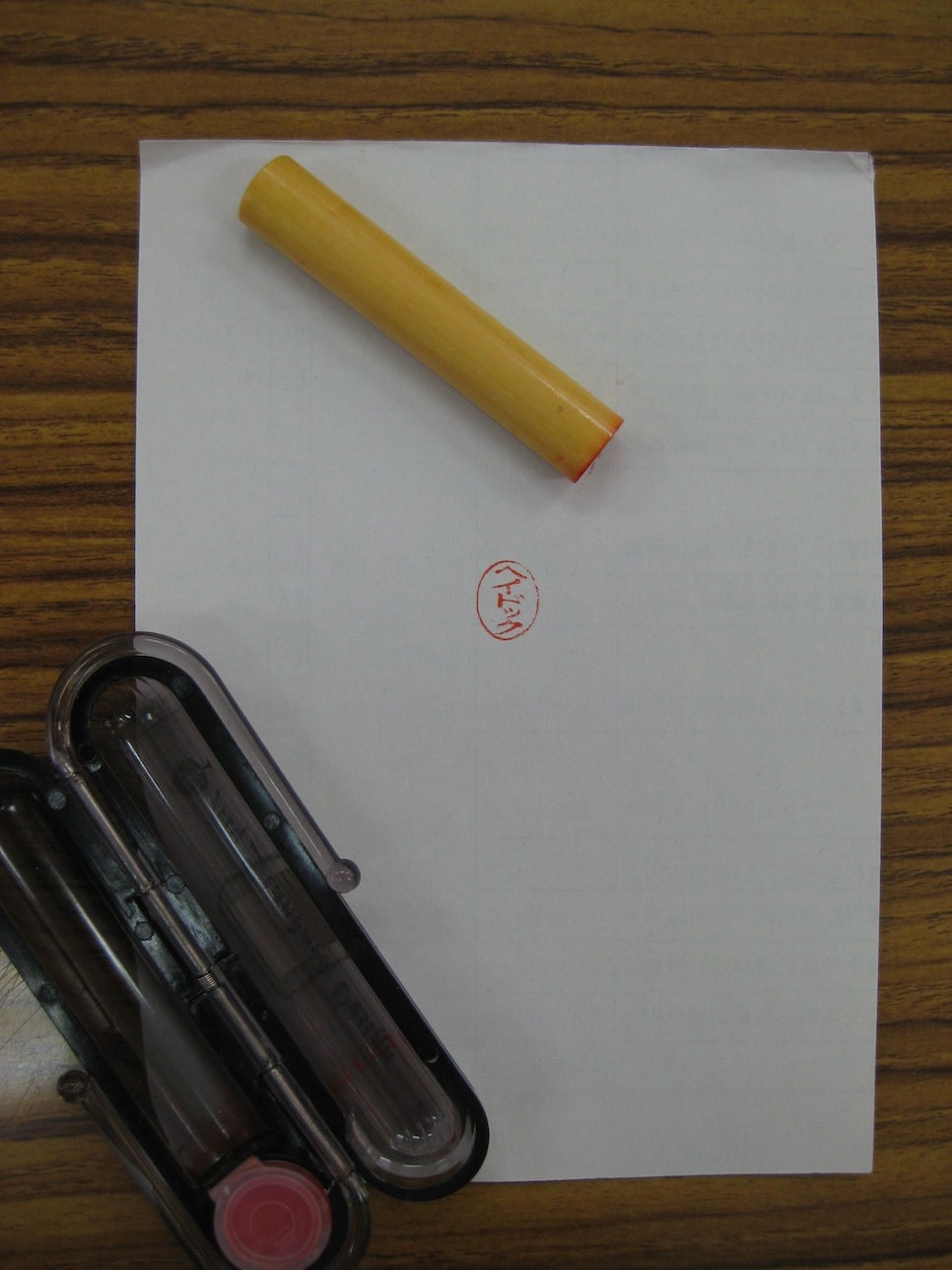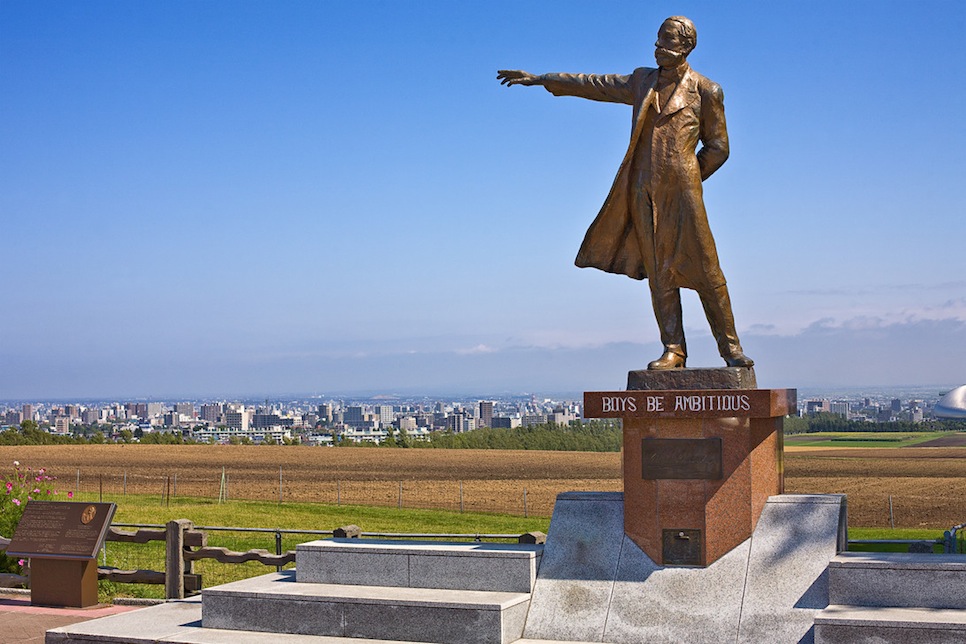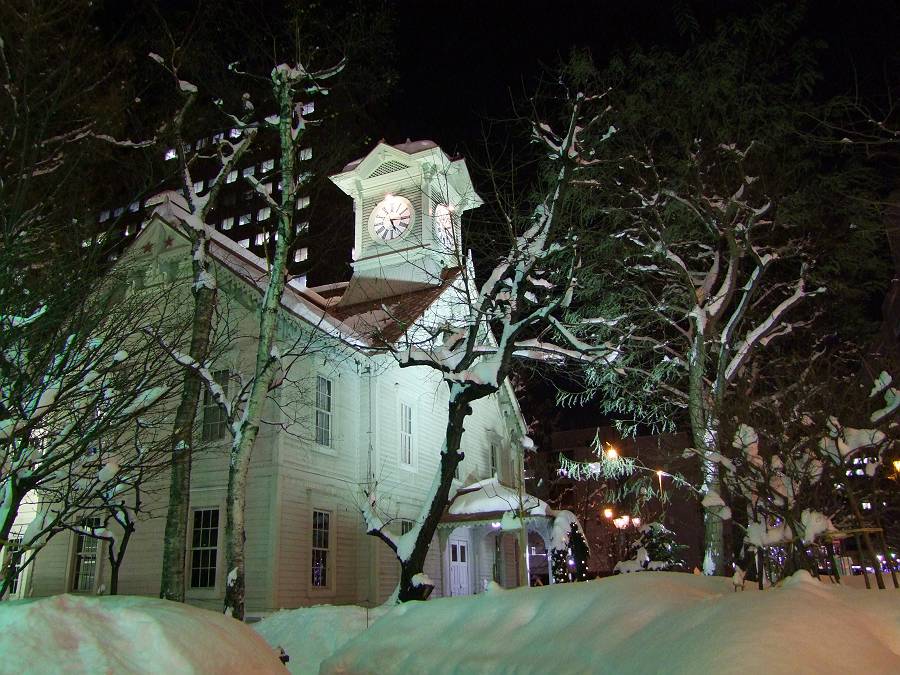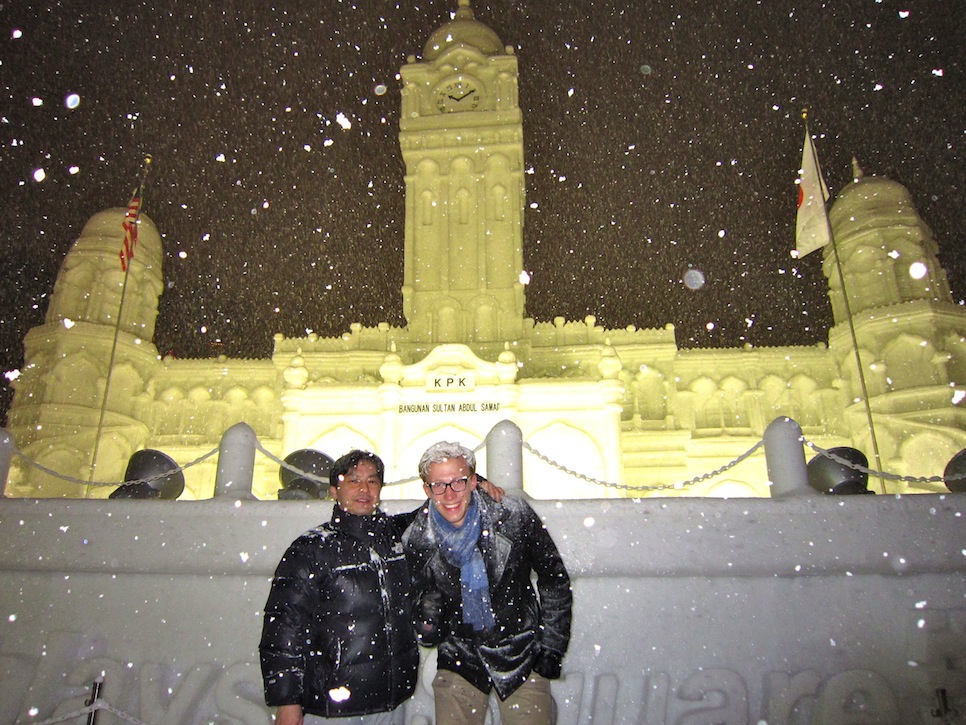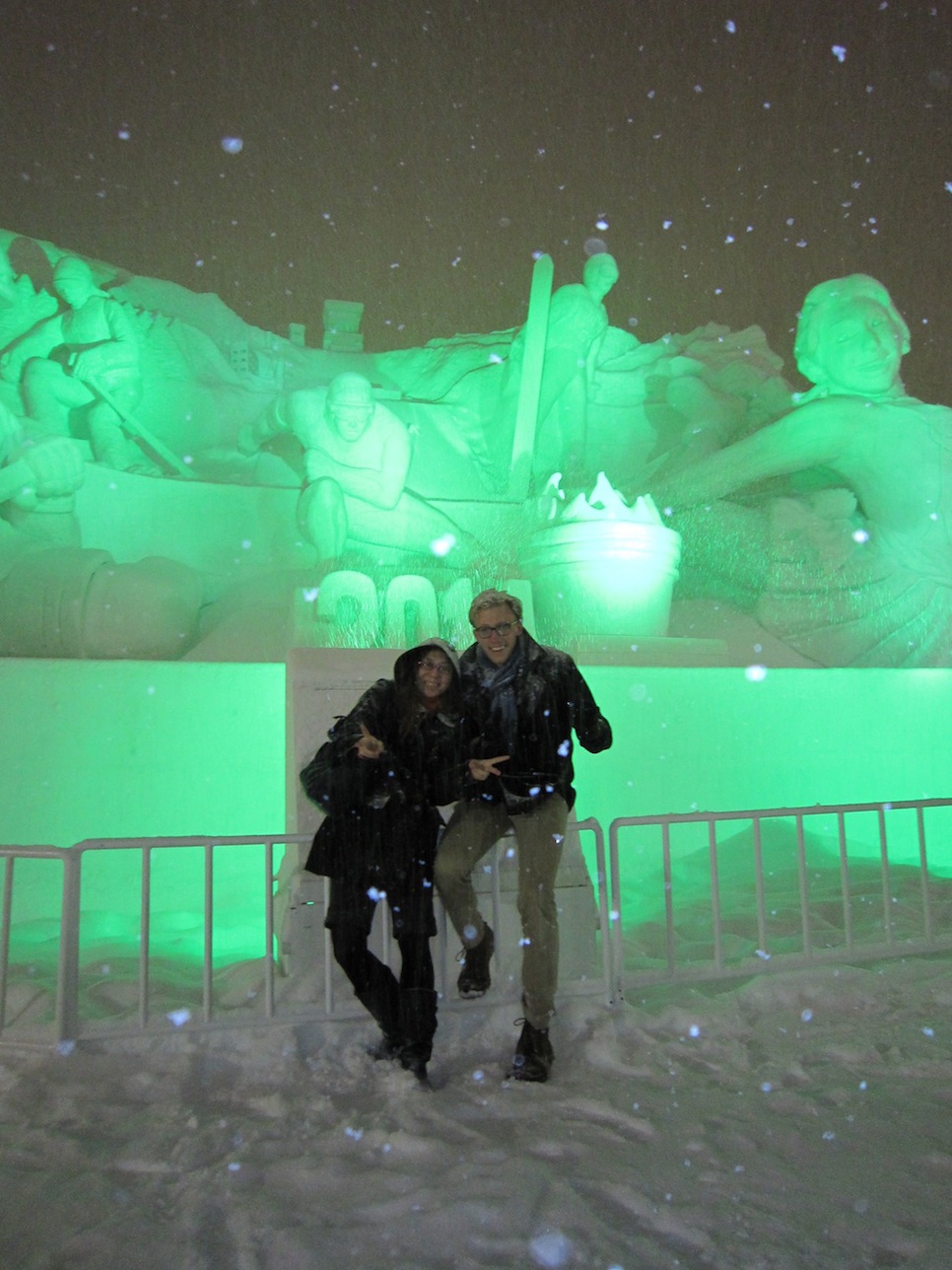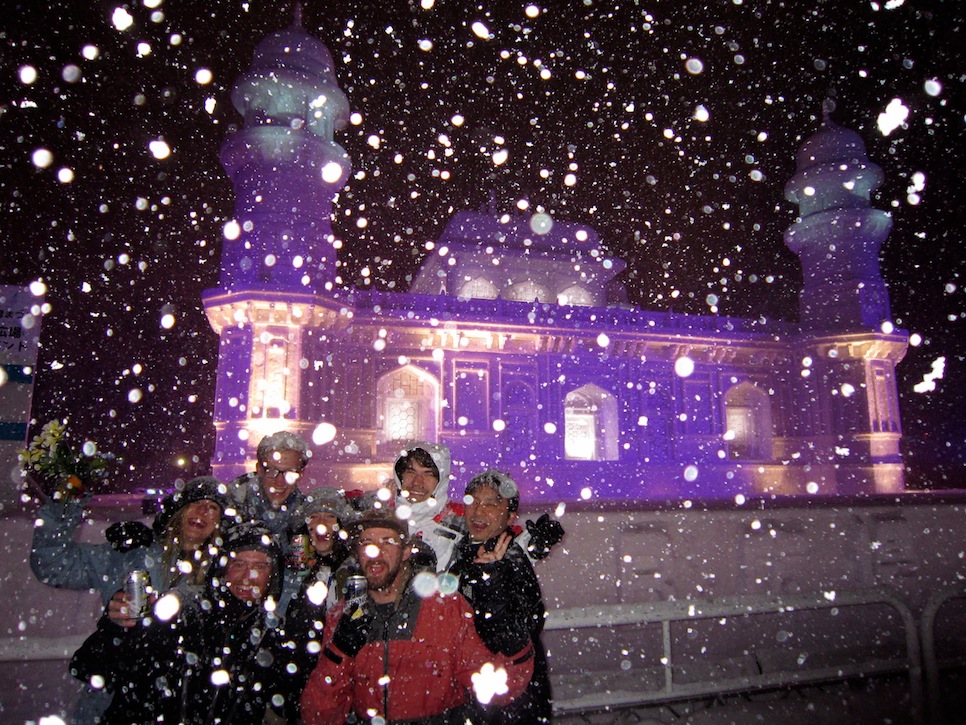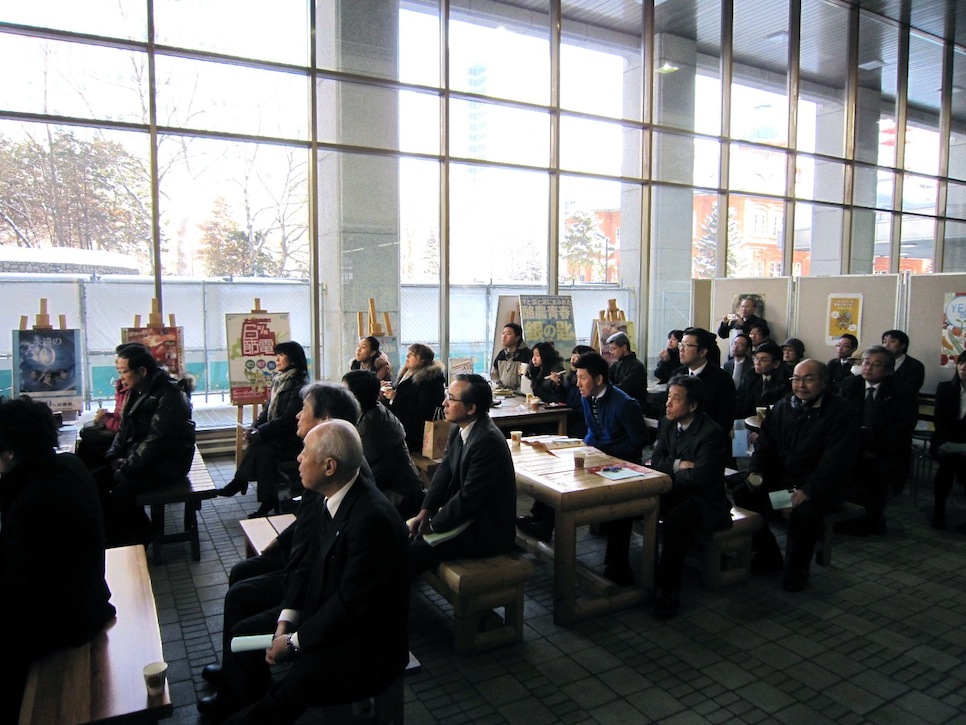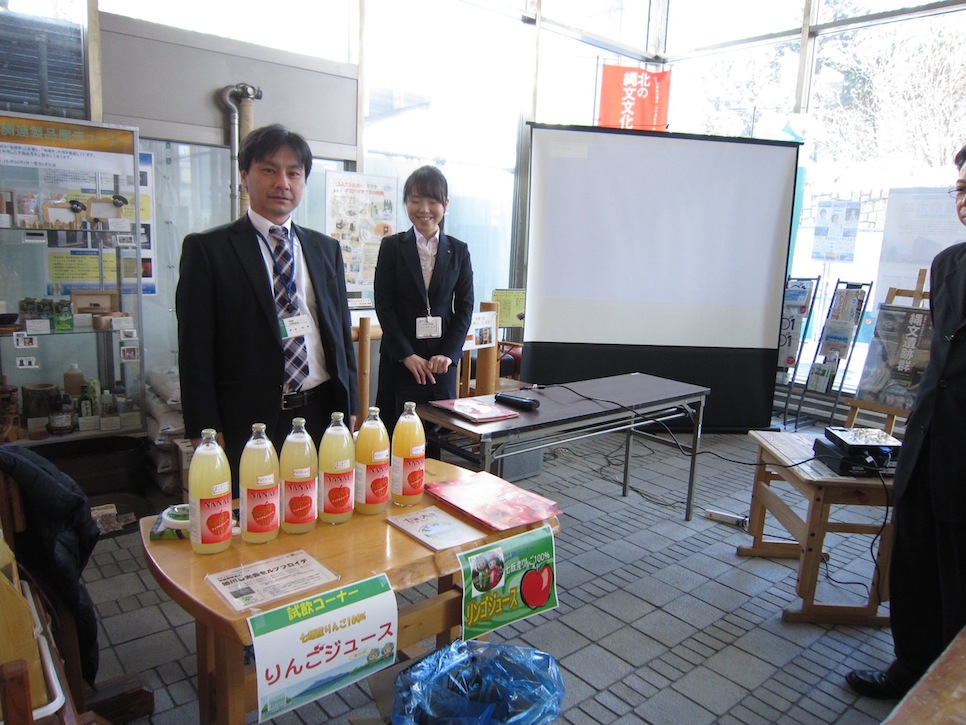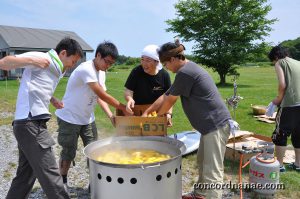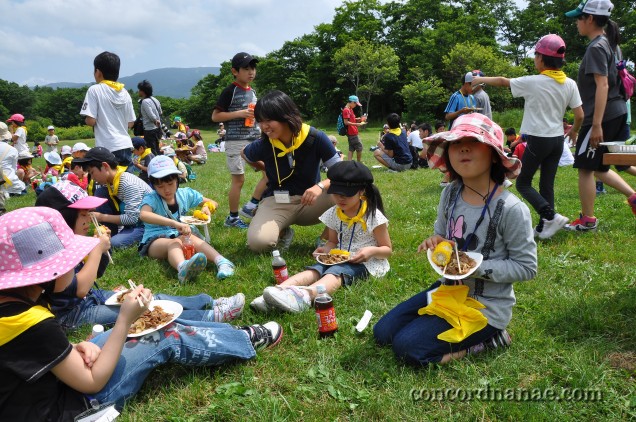In May of 1854, American Commodore Matthew Perry docked in Hakodate with an imposing naval fleet and signed a treaty with the Japanese, opening Hakodate to foreign trade. With more Japanese cities following suit in the coming years, Perry’s arrival was one of several significant events eventually leading to the downfall of the 250 year Tokugawa reign, and the end of the Samurai era. 160 years later, to mark this anniversary, the American missile guided cruiser USS Shiloh pulled into Hakodate Bay, and 380 officers and sailors of the United States Navy came to town.
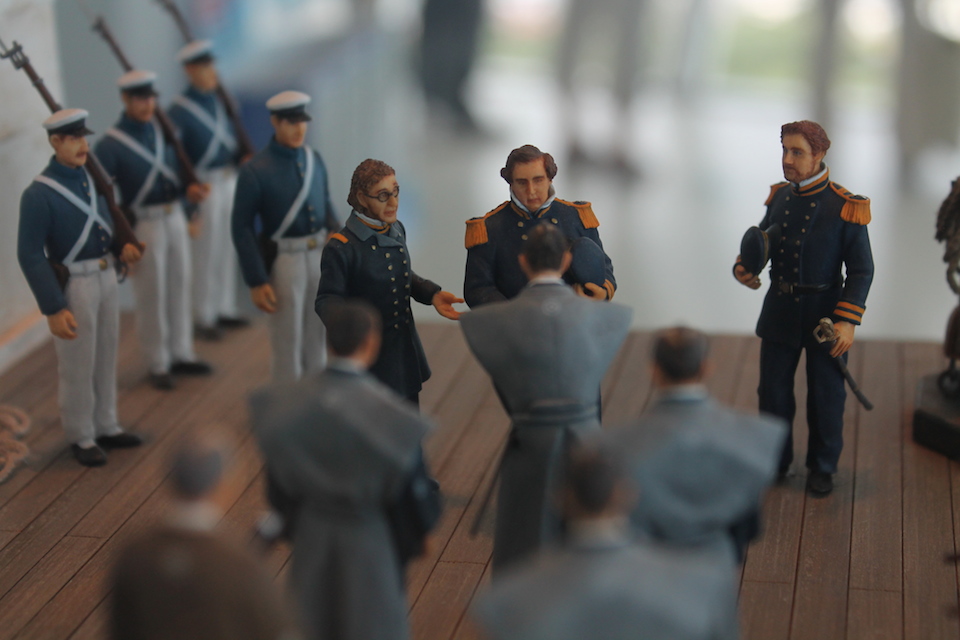
Goryokaku Tower is a modern cream colored pentagonal pillar topped by a two floor glass rotunda that overlooks the star shaped Goryokaku Fort. The fort was designed a year after Perry’s arrival, with the intention of protecting both Hakodate and the main island of Honshu from encroaching Russian fleets, which could have passed through the Tsugaru Strait that divides Hokkaido and Honshu en route to juicier targets like Tokyo. However, rather than defend against Russians, the fort was taken over by Japanese rebels in 1868 during the Boshin War. These rebels, samurai loyal to the Tokugawa Shogun, revolted after the young Emperor Meiji, heavily influenced by anti-samurai advisors, abolished the Tokugawa House. After a series of victories by the new and growing Imperial Army, the remaining samurai fighters established a base at Goryokaku, and, in a very progressive manner, declared Hokkaido a constitutional republic named Ezo. While Ezo’s government was based almost entirely on that of the United States, and even though Ezo held the first democratic elections in Japanese history, the United States refused to grant this infant nation diplomatic recognition. Aided by the French military, Ezo troops put up a strong fight against the invading Japanese Imperial Army the next year, but were soundly defeated, and the flag of the rising sun was raised over Goryokaku Fort on June 27, 1869, thus drawing the Boshin War to a close and ushering in the Meiji Era and rise of Imperial Japan.

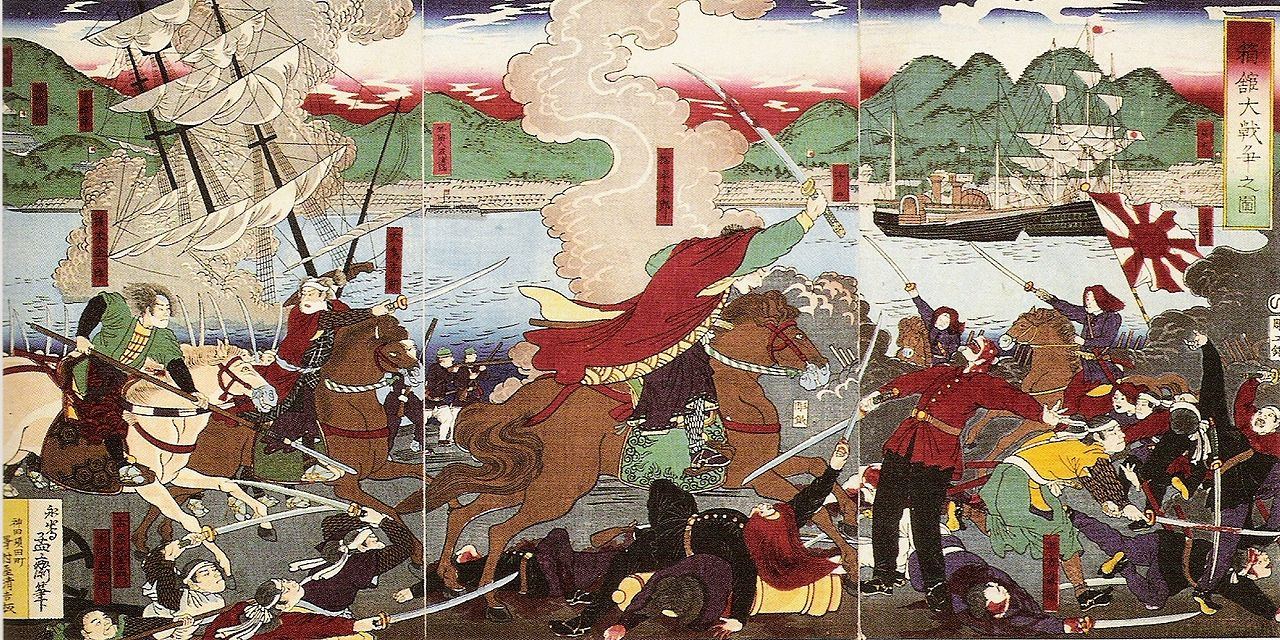

In present day, the annual Goryokakusai, or Goryokaku Festival, pays tribute to those who died in the final battle of the Boshin War. A parade featuring costumed participants representing numerous Japanese clans, foreign armies, and samurai of the period from 1854-1869 re-enact many of the events that marked these tumultuous years. This year was particularly eventful given the special anniversary of Perry’s arrival, and since almost all of the American sailor parade spots were taken by real servicemen and woman, yours truly played a British flag bearer circa-1860 leading a merry band of Japanese college students brandishing muskets and adorned in lobster red uniforms and pith helmets. Nanae CIR Ben Haydock turned heads in his portrayal of a 19th century cutlass-wielding Dutch naval officer, while other Hakodate area ALTs filled out the parade as officers and flag bearers of France, Russia, and, for one extremely lucky New Yorker who fit into the provided M size trousers, the United States. Under a late spring sun, we band of brothers and sisters marched through Goryokaku’s lively streets, while several Japanese samurai actors held walking sword fights, re-enacting the last battle of 1869. Our party came to a rest within the old walls of Goryokaku’s 19th century castle, where a ceremony recognized the historical significance of those who fought and died 145 years ago. Finally, a brass band played several tunes, western and Japanese, three ancient cannons fired off a few blank rounds, and the 2014 Goryokaku Festival came to a close.

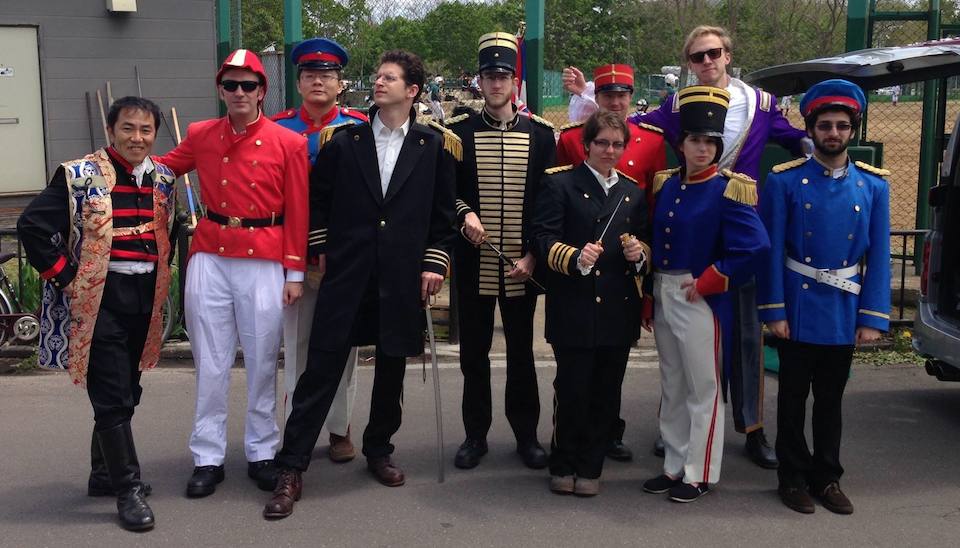
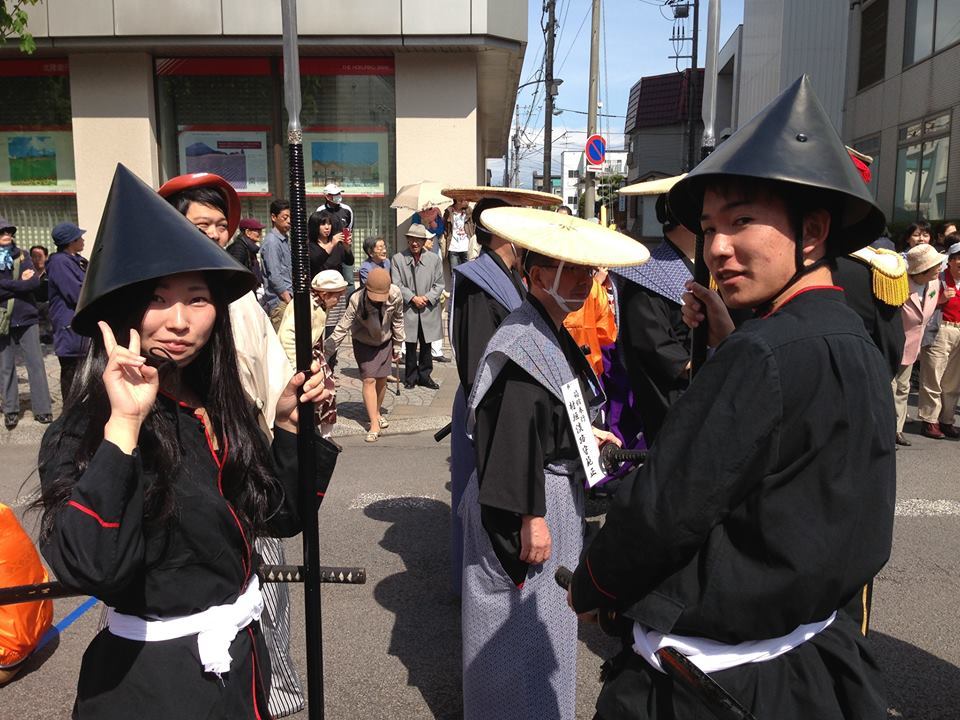
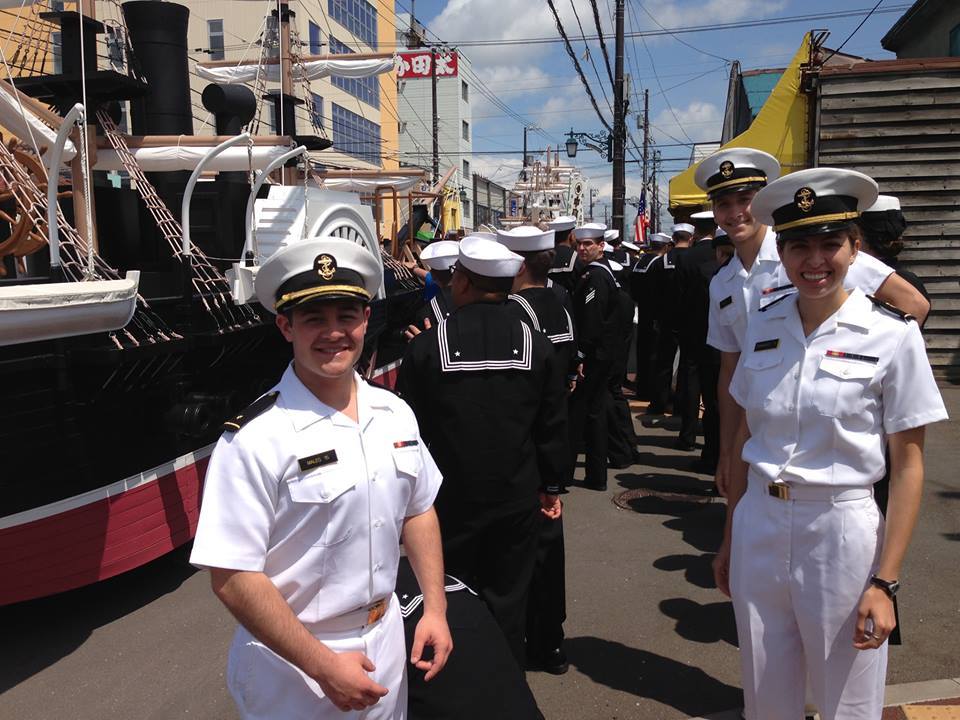

The evening before Goryokakusai, Susumo Nakano, owner of Goryokaku Tower and President of the Japan-America Society of Hakodate, hosted a banquet for many of the parade participants as well as half a dozen officers of the USS Shiloh and two representatives from the US Consulate in Sapporo. After a few drinks, we gaikokujins (foreigners) were brought up on stage to make speeches in Japanese. In awe of military figures since my failed ROTC days, I made up for my lack of formal attire with impeccable Japanese and an English “thank you” to the folks from the Shiloh for their service. Becoming acquainted with those onboard the ship allowed me the rare opportunity of touring a Ticonderoga-class missile cruiser on deployment. In its twenty-year history the Shiloh is known for having launched Tomahawk missiles against Iraq both in 1996 and in the opening salvos of the 2003 Iraqi invasion. It played a major role in relief operations after the devastating 2004 tsunami and is currently on patrol with the 7th Fleet in East Asia.

I feel truly blessed to have the opportunity to live and teach in Nanae, becoming immersed in Japanese culture and becoming a part of a very special town. My experience here since my arrival at the end of July, 2013 has been an incredible one, and I recently signed on for another year of teaching English in Nanae’s elementary and middle schools. That said, as visits from friends and family back home are few and far between, it can be easy to lose track of what it is that you are representing beyond the basic structure of a teaching assignment here. Spending time with the people who serve on board the USS Shiloh reminded me that the second purpose of my job here beyond teaching English is to best represent the cultures and traditions of Concord, and the values of the United States as a whole. Many thanks to the folks of the Shiloh, the Japan-America Society of Hakodate, and the countless parade volunteers who made this great weekend possible!


